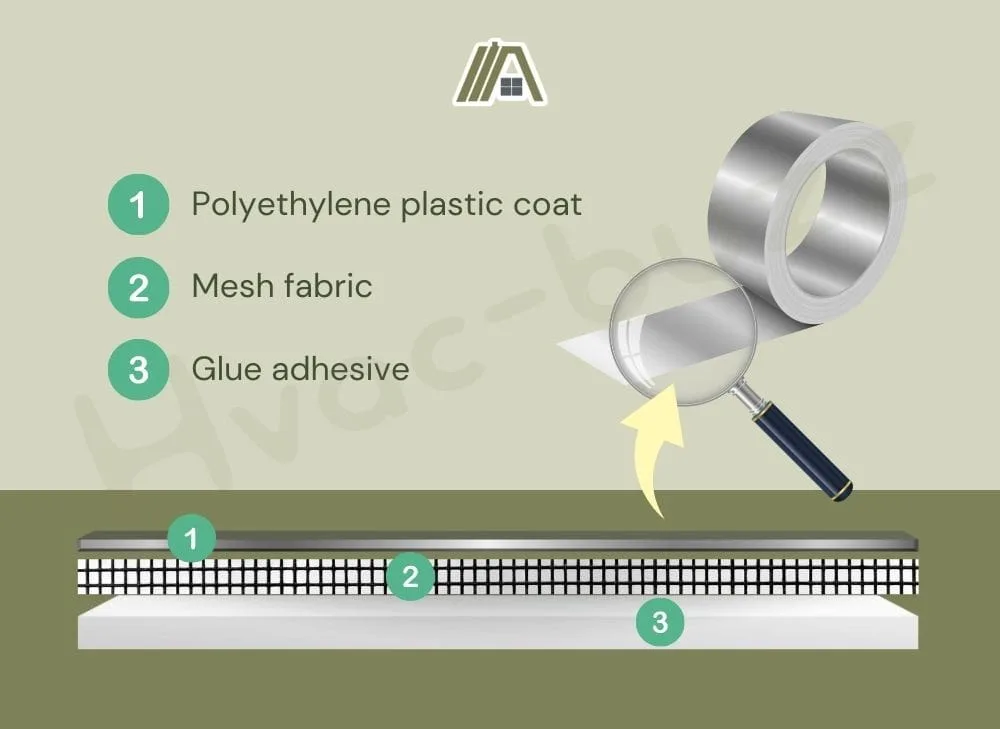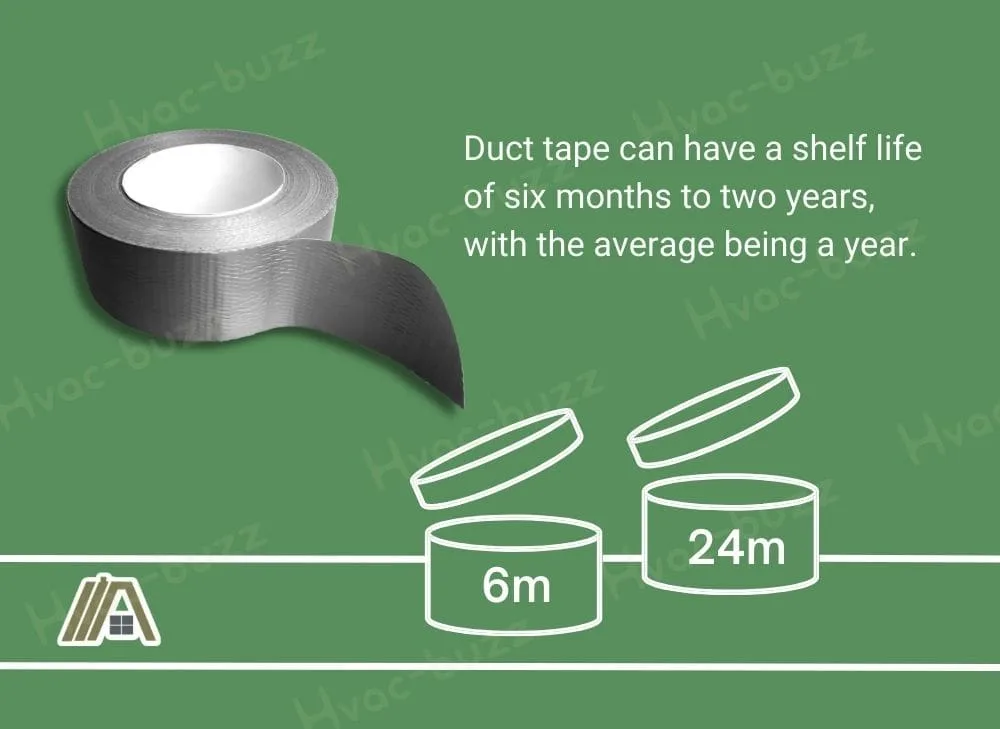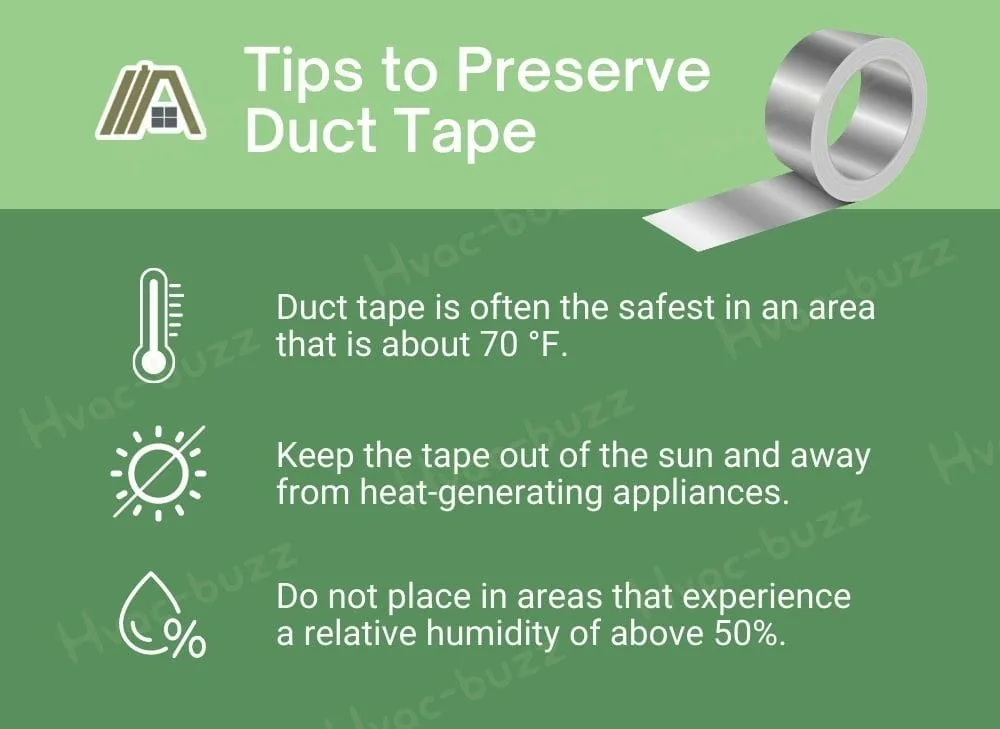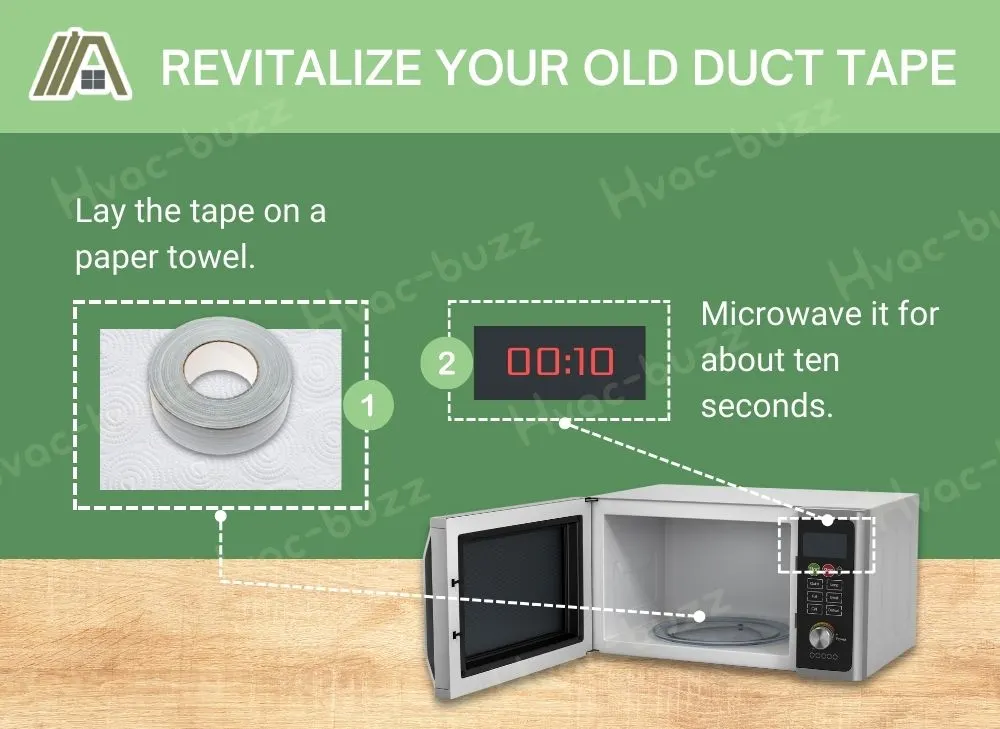Duct tape. The instant fix to many homeowners’ problems. You never need it next week; you always need it now! This is why it’s so frustrating when you go to grab the faithful roll only to find it’s not working like it should. Well, it turns out that duct tape is one of the non-food products that can expire.
Just as expired food can no longer serve its purpose, expired duct tape is not up to the myriad tasks we need it for. The loss of function is linked primarily to the adhesive. The shelf life can depend on several factors, but there are also ways of staving off expiration beyond the stated shelf life.

Duct tape can expire. The adhesive loses its stickiness, and the tape can no longer function. Duct tape has a shelf life ranging from 6 months to 3 years, and the shelf life does differ across the brands. However, it does not seem related to popularity or price.
How Can Duct Tape Expire?
The three major components of duct tape are the plastic coating, the fabric mesh, and the adhesive back.
The adhesive backing is what is most in danger of expiring.

The effects of time, extreme temperatures, and moisture on the adhesive can cause the tape to expire because they rob the adhesive of its stickiness.
Time can cause duct tape to dry out as the chemical components of the adhesive age and accumulate impurities such as dust.
Duct tape stuck on a surface for more than a year is likely to start to fall off, even if temperature and moisture are controlled and not extreme.
High temperatures can also cause drying out as the heat causes the chemical components of the adhesive to degrade and break down. This is because heat speeds up chemical reactions, including the ones that degrade duct tape’s adhesive.
Extremely high temperatures can even lead to the duct tape adhesive deforming or even melting, making the tape useless.
In addition to the heat, duct tape also does not respond well to cold since, at cold temperatures, the rubber-based components of the tape will begin to completely solidify. With this loss in flexibility, the adhesive will likely lose its grip, particularly if the surface to which it is stuck is not perfectly flat.
Additionally, exposure to moisture can affect the seal of duct tape.
When duct tape is in contact with water, whether this is through liquid water or humid air, the water acts as a lubricant that will cause the adhesive to slip and lose its hold on the object.
Sustained contact with water will keep the duct tape from sticking and will begin to break down the chemical components of the adhesive, rendering the duct tape useless.
Since air ducts contain cold air, hot air, and moisture, this makes duct tape a bad fit for air ducts, despite the name.
The plastic/fabric portion of the duct tape does not degrade as much or as quickly as the adhesive. However, high heat can deform it, and cold temperatures can make it brittle.
Average Shelf Life of Duct Tape
Duct tape can have a shelf life of six months to two years, with the average being a year.

Shelf life varies since brands use different materials and production processes.
One major variable in shelf life is the adhesive package.
Rubber glues used by duct tape use UV stabilizing packages formulated to withstand age. The chemical makeup will vary by brand, and some may be better in quality.
The quality of the fabric and polythene plastic layers also impact the shelf life.
Does the Tape Shelf Life Vary Across Brands?
| Brand | Shelf Life | Price (low, medium, high) | Amazon Link |
| 3M | 1 year | Low | View |
| Gorilla | 2 years | Medium | View |
| Nashua Tape | 3 years | Medium | View |
| Scotch | 2 years | Low | View |
| Polyken | 1 year | High | View |
It is hard to find trends in this table since the ones I expected are not shown in the data.
I expected more well-known brands, such as 3M and Scotch, to have longer shelf lives. Oftentimes, brands that are well-known are popular because of their quality.
However, these two brands actually have medium or short shelf lives. One thing that may link to their popularity is their low price range. People can be willing to put up with certain compromises in quality if the price matches this.
Another trend I expected to see was higher-priced duct tapes having a longer shelf life. However, this was not the case.
The longest-lasting duct tape, the outlier Nashua Tape, actually has a price in the medium range.
Contrary to my expectations, the highest-priced tape, Polyken, actually had one of the shortest shelf lives at one year.
So, despite the fact that the shelf life seems pretty random, we can conclude that the brands do differ when it comes to how long it takes for their duct tape to expire.
Tips to Preserve Duct Tape
Although a duct tape brand may claim that its shelf life is up to three years, it is likely that this lifespan won’t be achieved if duct tape is not used and stored properly.

The best ways to preserve duct tape are to read the instructions and carry out the recommendations.
Most instructions, whether on the brand’s website or on the packaging, will give a range of temperatures at which the duct tape will perform best.
As a rule of thumb, duct tape is often the safest in an area that is about 70 °F.
A little above or below should be safe, but extremes such as 30 °F or 100 °F are likely to damage the integrity of the duct tape and its adhesive.
So, keep the tape out of the sun and away from heat-generating appliances (e.g., don’t tuck it into the drawer next to the oven).
If you live in a hot climate, where the temperatures easily surpass 70 °F, then you should look for a deliberately cooler spot.
Although many duct tape manufacturers may say that their tape is waterproof, this is not strictly true. Duct tape is considered to be water-resistant, scientifically speaking. It can recover from some contact with high humidity or liquid water, but sustained contact will ruin the tape.
Because of this, even if the tape claims that it is waterproof, do not place duct tape in areas that experience a relative humidity of above 50%.
So, keep it away from bathrooms, laundry rooms, and rooms that have humidifiers running (a staple in the bedrooms of people suffering from allergies or colds).
Additionally, keep duct tape away from plain old liquid water. Again, avoid bathrooms and laundry rooms. Don’t keep it outside, even if you most often use it for outdoor repairs. The kitchen is also not the best place to store duct tape.
Is There Any Way to Revitalize Old Duct Tape?
The consensus seems to be that there are no specific methods by which you can revitalize your old duct tape. However, there is a trick for old, dried-out masking tape that may also work on old duct tape.
The trick is to simply lay the tape on a paper towel and microwave it for about ten seconds.

This is supposed to heat up the adhesive, causing it to loosen, become softer, and, thus, regain its stickier.
I don’t have any old duct tape at my disposal; otherwise, I would have tested this out for you. However, the reasoning behind the method does seem relatively sound.
Still, there are some things to be wary of:
- For one, the duct tape could become too hot in the microwave, ruining the adhesive completely.
- Also, the microwave may melt the glue or cause dangerous chemicals to be released if the temperature is too high or the tape is heated for too long.
Then there are the limitations of this method:
- If the duct tape has lost its stickiness due to exposure to high to temperatures, it is unlikely that applying heat will help it.
- Additionally, duct tape that has lost its stickiness due to moisture is most likely too degraded to be helped by microwaving. Even if the heat removed moisture, the adhesive may be too far gone.
- If the duct tape was too cold and became brittle, microwaving could work to loosen the adhesive up. However, microwaving could also remove moisture from the brittle tape, causing it to dry out even more.
Sources
https://multimedia.3m.com/mws/media/96407O/vinyl-duct-tape-3903-tds.pdf
https://todayshomeowner.com/video/how-to-rejuvenate-old-rolls-of-masking-tape/
